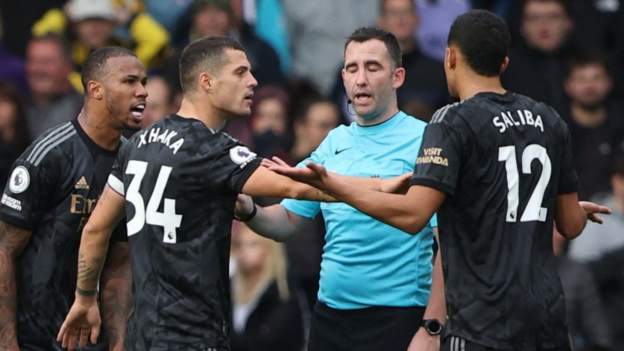[ad_1]
Mark Hughes looks at Mercedes’ performance drop-off from Sao Paulo – where George Russell took their first and only win of the season – to Abu Dhabi, where Russell came home fifth and Hamilton did not finish. Giorgio Piola provides technical illustrations.
Mercedes’ recent return to form was brought up short in the final race of the season at Abu Dhabi. Just seven days after their one-two result in Brazil, they were definitely only the third-fastest team around the Yas Marina circuit.
READ MORE: 6 Winners and 5 Losers from Abu Dhabi – Who signed off their season in style?
Following their significant floor and wing upgrade in Austin, together with a revised wing and some significant weight saving, there was a step change in the W13’s competitiveness. But that was at tracks – Austin, Mexico City and Sao Paulo – which do not unduly punish a higher level of drag.
In Abu Dhabi, the long flat-out sections of Sector 1 and the chicane-punctuated flat-out sections between Turns 5 and 9 mean that low drag is an essential part of the equation of being competitive there. It can be inferred from its performance patterns throughout the season that the W13 is a considerably draggier car than the Red Bull. At Abu Dhabi that hurt much more than at the preceding three track layouts.

This had an impact upon the team’s strategic choices, as trackside engineering chief Andrew Shovlin explained. “Looking at the FP3 timesheets we concluded we’d probably have two Red Bulls ahead of us whatever we did. We weren’t expecting to be so far behind the Ferraris – that was a bit disappointing. But the fact we knew we’d have the Red Bulls ahead meant we didn’t make any decisions based around qualifying. Everything was for the race.”
READ MORE: Russell calls P5 at Abu Dhabi GP a ‘reality check’ for Mercedes after ‘character-building’ season
In the practice sessions Lewis Hamilton and George Russell had both tried a reduced flap angle rear wing, which reduced the straight-line speed deficit to the Red Bull and the low-winged Ferrari, but which proved slower over the lap, because of the oversteer through the tighter turns of the final sector.
Given that they expected to qualify behind Red Bull anyway and that the race was looking to be finely-poised between a one-stop and a two, Mercedes decided to run the bigger wing to help protect the tyres, even if that did make their car less raceable wheel-to-wheel because of its vulnerability at the end of the straights.

Another conundrum presented by the Yas Marina Circuit layout also probably hurt Mercedes more than the others. There is a degree of tyre management necessary even over a qualifying lap here. If full advantage is taken of the grip available through the long fast sweeps of Sector 1, the rear tyres will tend to be too hot for the twists of Sector 3.
READ MORE: The design secrets that set Red Bull’s RB18 apart from its F1 rivals
Complicating things further, it is difficult to have the front tyres up to temperature for the start of the lap without overheating the rears. This presents a particular problem for Mercedes’ W13, which needs an especially aggressive out-lap to bring the front tyres up to temperature. This is a downside of the positive trait the car has not overworking the front tyres in the race.
Much of the heat management of the front tyres comes from the brake ducting arrangements inside the wheel. That of the Mercedes is very sophisticated, as we recently discussed here. We can see the difference between the maximum brake cooling arrangement used in the thin atmosphere of Mexico and that used in Abu Dhabi.
The internal of the Mercedes wheel ducting. In Abu Dhabi – where less brake cooling was required – the more enclosed shrouding meant less heat transference to the tyres…
In Mexico, where the brakes demanded maximum cooling, the more open shrouding meant more heat transference to the tyres.
“We don’t seem to change that [ducting] as much as some,” says Shovlin. “Generally we’re trying to keep the rubber on the cooler side as that allows it to last a bit longer and keeps the pressures from rising too high. Others are trying to put more temperature in than we are.”
F1 NATION: A 15th win of the season for Verstappen and a farewell to Vettel – it’s our Abu Dhabi GP review
The more brake cooling, the more heat is transferred into the rims and tyres. In Mexico, full priority had to be given to the brake cooling, which is extremely marginal there. Hence keeping the front tyres cool had to assume less importance there, but around Abu Dhabi the tyre cooling once more took priority, as an important part of the car’s good tyre usage in the race.
As with the wing choice, it emphasised how much Mercedes’ decisions were based upon race day performance rather than qualifying.
[ad_2]




